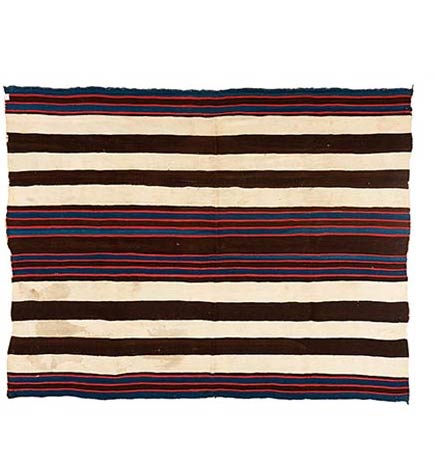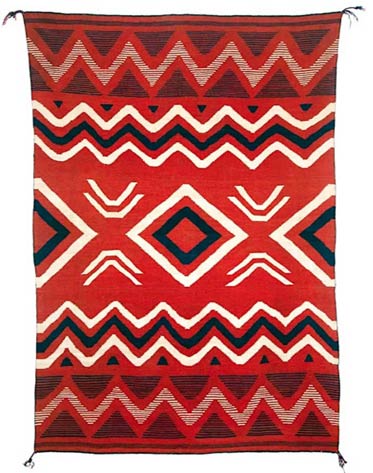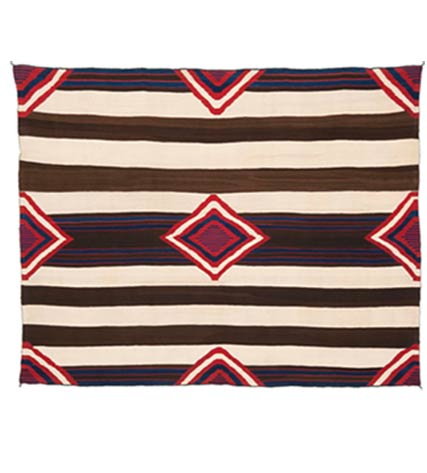What’s the Difference Between a Chief’s Blanket and a Serape?
Navajo chief’s blankets were woven wider-than-long. The wider-than-long format remains consistent for first phases, second phases, third phases, and variants woven between 1800 and 1900.
Navajo serapes were woven longer-than-wide. Then longer-than-wide format remains consistent for bayeta serapes, banded serapes, and striped serapes woven between 1800 and 1900.
Classic (pre-1865) chief’s blankets have brown central panels, with brown and white bands above and below their central panels, and pairs of thin blue bands inside their brown bands and brown central panels.
Classic (pre-1865) bayeta serapes have red backgrounds with blue and white design elements, usually in the forms of terraced diamonds and terraced diagonals. In certain bayeta serapes, especially bayeta poncho serapes, there can be an optical interaction between foreground and background. Concentric diamonds at the centers of bayeta serapes tend to be larger and more imposing than the diamonds above and below the central diamonds.
In classic first phases, red yarns appear as thin red stripes. In classic second phases, red yarns appear either as horizontal rectangles or concentric squares. In classic third phases, red yarns appear as concentric diamonds, half-diamonds, and quarter diamonds. In classic variants, red yarns appear in combinations of rectangles and diamonds, or as designs lifted either from Navajo mantas or Navajo serapes. Design elements in classic chief’s blankets are usually more restrained than design elements in classic serapes.
Between 1800 and 1830, first phase chief’s blankets became valuable trade items among high-ranking members of the Arapahoe, Cheyenne, Kiowa, Lakota, Shoshone, and Ute tribes. The term, “Ute Style” comes from the Ute tribe’s preference for first phases woven with brown and white bands, and thin blue bands, but no red stripes. Between 1800 and 1850, bayeta serapes became valuable trade items among the Mexicans and the Spanish. There’s some evidence that Spanish merchants in the Chama Valley, north of Santa Fe, commissioned Navajo women to weave bayeta serapes, and provided the weavers with bolts of red bayeta cloth so the weavers could ravel red yarn from the bayeta cloth.
Concentric diamonds appear in bayeta serapes during the early 1800s. Concentric diamonds appear in classic third phase chief’s blankets during the early 1850s. The diamonds in classic serapes tend to be more aggressive and imposing than the diamonds in classic third phases.
After 1860, bayeta serapes became popular among Anglo-Americans, especially among U. S. Army officers. While classic first phases and classic second phases had little or no appeal to Anglo-Americans, a limited number of classic (pre-1865) third phases were collected by Anglo-American buyers. Between 1865 and 1900, Anglo-American collectors bought significant quantities of late classic and transitional third phases. Today, there are more late classic and transitional third phases available to collectors than there are late classic or transitional serapes.






